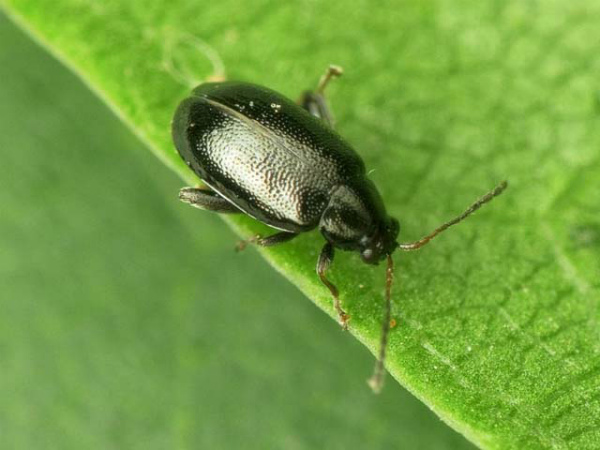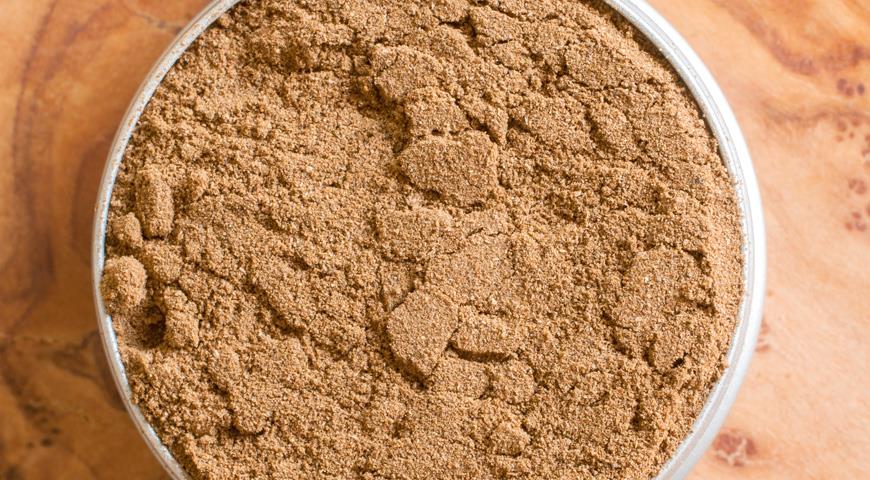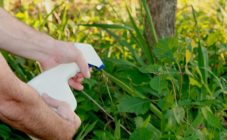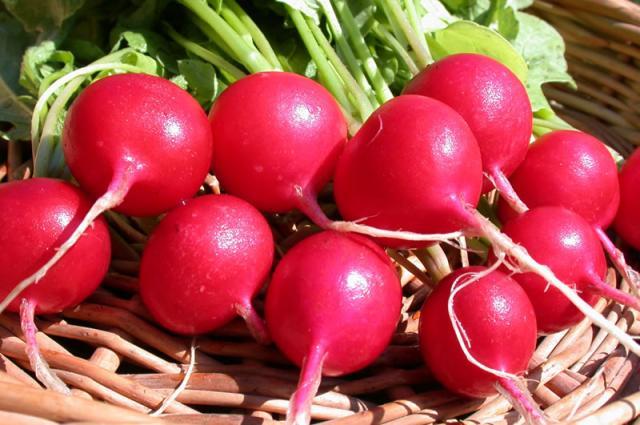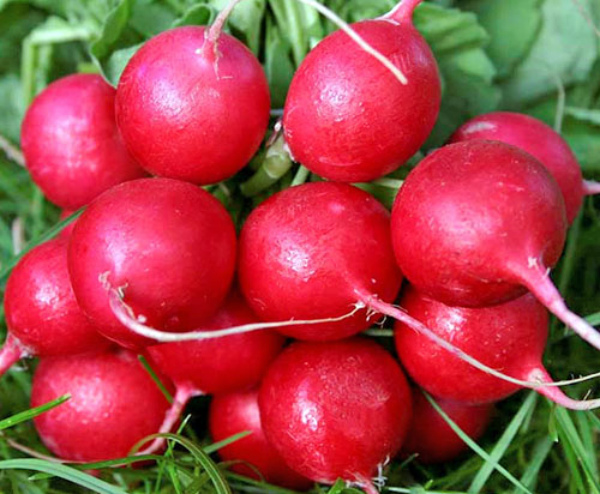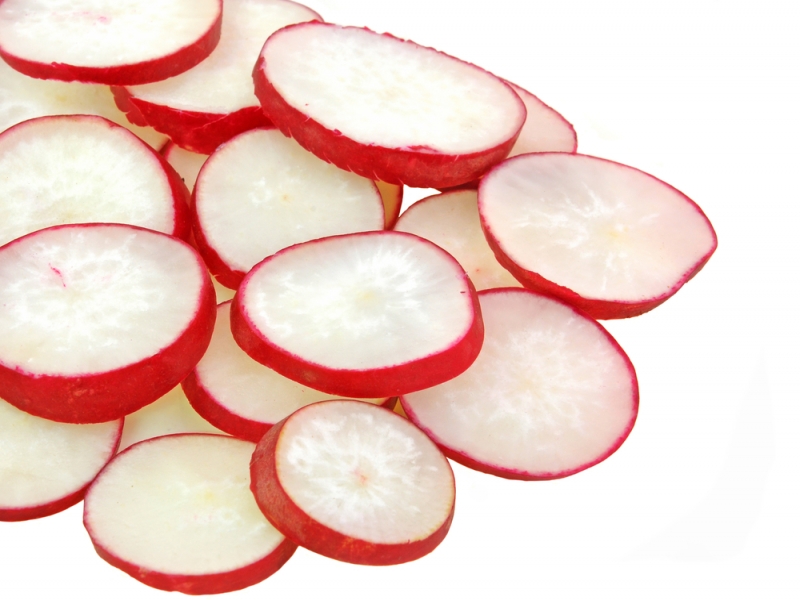Content:
Harmful insects can ruin your radish harvest. You can avoid this if you determine in time which parasite is attacking the plant, and how you need to treat the radish from pests.
Radish pests
The main pests of radishes are:
- Cruciferous flea. This main enemy of radish is capable of destroying delicate radish seedlings in a short time. The black beetle got its name for its external resemblance to a flea and jumping ability, as well as for its gastronomic preferences: love for cruciferous crops. The pest gnaws through the young tender leaves of the radish and makes depressions in the harder ones. The highest activity of the flea is from 10:00 to 13:00 and from 16:00 to 18:00. The heat promotes its reproduction. The insect lays eggs in the soil. The larvae settle on the roots and eat them. Thus, the landings perish;
- White butterfly. It is dangerous because it lays eggs on radish greens. From them larvae-caterpillars develop, which feed on leaves. The presence of caterpillars can be recognized by twisted foliage with elongated holes;
- Spring cabbage fly. The insect has a small gray body with transparent wings. Attacks crucifers during the flowering period of bird cherry. The period of activity ends after the lilac fades. Pest larvae gnaw through passages in roots and stems;
- Cruciferous bug. The pest hibernates under the remains of plants. With the onset of warmth, it lives on wild cruciferous plants. Switches to cultural when they appear in the garden. The female insect lays eggs on the back of the leaves. After about 14 days, larvae form, after a month they turn into mature insects. Both mature bugs and larvae harm the plant. These pests suck the juice out of the leaves. They are especially active if the land is devoid of moisture. It is difficult not to notice this parasite on the plant, its red-black color contrasts with green leaves;
- Cabbage moth. This small pest is gray-brown in color, with a dark fringe on the wings, lays eggs on the lower surface of the leaves. On days 3-7, caterpillars appear from them, they feed on sap and leaf tissues;
- Garden moth larvae. They eat young shoots of radishes. This stops the growth of the root crop. If you do not destroy the pest in time, then the greens can grow, and the root crop will remain a root, will not develop;
- Clickers and wireworms. Adult clicking insects eat leaves of young plants. Their larvae (wireworms) are those who eat radishes in the ground. If the radish is damaged by wireworms, rot and other fungal diseases develop. The fruits turn black and rot from the inside.
Compositions from black fleas
Novice gardeners, with an invasion of cruciferous pests, are wondering how to treat a radish from a flea. Today there is a huge selection of products and formulations for spraying against these parasites. Therefore, do not panic if the radish leaves have become in the hole, what to do.
You can decide the best way to spray a radish from a flea by studying the properties of these pesticides:
- Alpha-cypermethrin. This group includes the following drugs: Alfatsin, Ivanhoe, Alterr, Accord, Alfas, Fagot, Fatrin, Tsunami, Caesar, etc.The group of these drugs is the least dangerous for bees or other pollinators. They are used in small doses and act quickly. Pesticides are effective in hot weather and will not wash off in rain. The tool destroys both larvae and adult pests. These drugs are highly active not only against fleas, but also against most other pests;
- Cypermethrin. This includes drugs: Tsiperon, Arrivo, Sharpey, Zalp, Fitosan, Inta-Vir. This remedy works almost instantly. Within half an hour after treatment, the pest dies, the protective period of plants lasts another 2 weeks. These drugs can be purchased at very affordable prices. The pesticide is safe for mammals and fish;
- Dimethoate. In order to get rid of the black flea, you can use the following means of this group: Pochin, Danadim Expert, Tol, BI-58, Rogor-S. The result comes in 48 hours, and the protective period after treatment lasts from 14 to 21 days. Just be aware that these chemicals are dangerous for bees;
- Imidacloprid. This group includes: Nuprid 600, Akiba, Tabu, Pikus. These products are usually used to treat the seeds rather than to spray the radish leaves. This substance can protect seeds before the first shoots appear. After all, the insect attacks mainly young leaves;
- Lambda Cyhalothrin. The group includes the following drugs: Kungfu, Lyamdeks, Altyn, Gladiator, Lightning and others. These are highly effective spraying products with a low application rate. The duration of the protective period is 14 days, highly toxic to fish and bees;
- Carbofuran. It is very dangerous for warm-blooded animals and bees. It is usually used as a seed dressing agent. The pesticide is not transferred to the soil and groundwater. By the time the crop is ready to be harvested, it has decomposed into harmless substances;
- Thiamethoxam. These include: Kaiser, Cruiser, Aktara and Raps. It is used both for spraying radish and for seed treatment. Active in hot weather, not washed off by rain. It works in half an hour, protects the plant after treatment for 3 to 5 weeks. Toxic to all pollinators;
- Chlorpyrifos. The group includes Shaman and Pirinex super. A very dangerous group of pesticides. Despite the fact that this drug works for a long time (up to 70 days), it is not recommended to use it for safety reasons. Chlorpyrifos is toxic not only to parasites, but also to plants and even humans. The chemical is banned in the United States.
Harvesting is recommended not earlier than a month after the last pesticide treatment.
Radish pests in the greenhouse
Pest insects can harm radish plantings not only in the open field, but also in the greenhouse. Most often in greenhouse conditions, cruciferous fleas attack radish. They gnaw the leaves of the radish, holes are formed in them. Sometimes novice gardeners do not know what to do if through holes appear on the leaves of the radish with what to process. If there are black fleas on the radish, what to do to protect the plant.
You can fight flea beetles with the help of pesticides, but it is better to use proven folk methods.
You can sprinkle tobacco dust, ground pepper or mustard between the beds. The same means of struggle are also used for preventive purposes.
Folk remedies against pests
If pests are found on radishes, you do not need to immediately treat the plant with pesticides. They should be used only in case of massive parasite infestation. There are many ways known how to treat a radish from a flea. Folk remedies can also successfully fight harmful insects.
For example, if a cruciferous midge is eating a radish, what to do in this case. As in the open field, and in the greenhouse, it can be fought with the help of pepper, tobacco and ash.
Ash particles enter the respiratory tract, and insects die.For prevention, the plants are sprinkled with a mixture of lime and ash (1: 1) every 7 days.
If there are few pests, you can just crush the radish leaves with ash a little.
You can also remove parasites from radishes with a sticky trap. It is necessary to grease the paper abundantly with starch paste and go around all the beds with it. Bouncing fleas will remain on the sticky paper. A few of these walks will help get rid of almost all pests.
White butterflies are scared off by the smell of mustard. When a parasite is detected, a mustard solution is used: mustard powder (100 grams) is poured with hot water (10 liters) and insisted for two days. Then the solution is diluted with clean water (1: 1) and the plants are sprayed.
From the larvae of the garden scoop, tincture of potato tops helps well. Add 50 grams of laundry soap to the infusion immediately before spraying. Processing is carried out in dry weather.
To protect radishes from parasites, it is important to carry out preventive measures:
- Plant the crop next to garlic, coriander or dill. The smells will scare away harmful insects;
- It is recommended to add products with a pungent odor to the water for irrigation: ammonia, fir oil or valerian;
- Gardeners are advised to lay fresh wormwood on the beds;
- You can mulch the garden with tansy branches;
- Weeds should be removed regularly;
- It is necessary to dig the garden in the fall;
- It is important to provide the plant with nutrients.
With these preventive measures, you can protect the radishes from pests.
